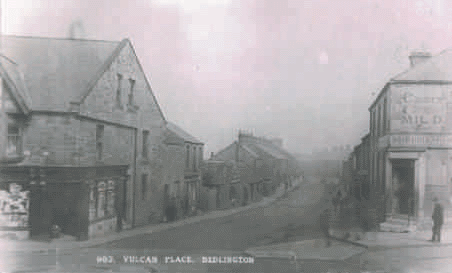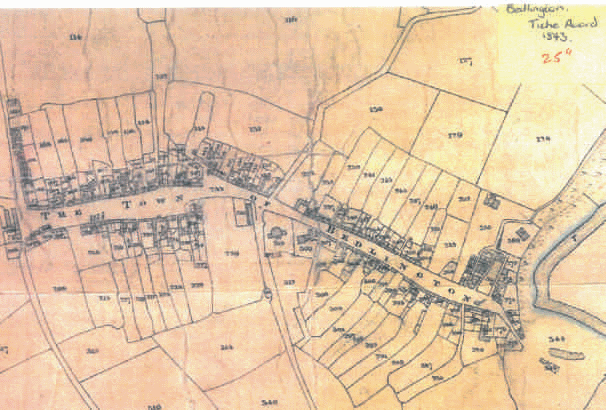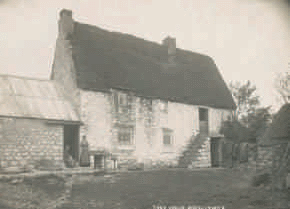In the first of a two part series Emma Humphrey shares her experience as a budding building detective...
Where?
Bedlington. A small town in Northumberland most folk have never heard of, unless you're a fan of Bedlington Terriers (the hound and/or the footie team). When we moved there in 1995, worried friends in Newcastle said 'But why do you want to live there? You'll get cornered in pubs...' and indeed we were, by confused locals asking 'But why do you want to live here?'.
Well, it has a nice Front Street. When we had driven through we thought: a lot of mature trees, some nice stone terraces, nice old church in the middle of town, a market place, plenty of pubs...
Recently, officialdom has also agreed that Front Street is bonny, so there's now a conservation area from the Red Lion pub at the top of Front Street West, to the top of Bedlington Bank at the end of Front Street East. Plus, the Council are splashing the cash with Townscape Heritage Initiative (THI) renovations and awareness events.

Building detectives wanted!
When the first THI newsletter dropped onto the mat, it proclaimed Building detectives wanted! The Heritage Lottery Fund had stumped up for a community project - a building recording day - coordinated by the THI and the North of England Civic Trust, and led by the North East Vernacular Architecture Group (NEVAG). Cool!
I haven't surveyed a building since architecture school, so let's see what I can remember. I fired off an email, got a 'Great! Thanks! We'll be in touch...' and so waited... and waited... for a year.
Finally, there was some movement: we were going to have a single Saturday to record three, maybe four buildings, with a lecture beforehand to give us some idea what we'd let ourselves in for.
The lecture
On Wednesday, 10 August 2011, St Cuthbert's Church played host to a talk by Martin Roberts (NEVAG, Ex-English Heritage, Ex-Conservation Officer for Durham City). After working out which church door we needed (sneaky side door, apparently), we grabbed a cuppa, a biscuit and a chair. Martin then outlined what exactly was required of us, what buildings and features we'd be looking for, and why it is important to do this work on the 'vernacular'.

Martin Roberts
What is vernacular?
Small forms and styles that are unique to an area, typically in the North East: miner farmer houses; Tyneside flats; Sunderland cottages. Often these buildings are mixed economy - the same building used for dwelling as well as livestock or manufacture. Single use buildings, such as barns, are sometimes surveyed as they can date from the Medieval period, but there are not many left in the North East.
Sometimes NEVAG will survey something a little grander, such as Unthank Hall in Stanhope but, as a rule of thumb, 'If you can't get it on A3 at 1:100, it's not vernacular,' says Martin.
So far, so chocolate box cosy, but there are risks. Many of the buildings surveyed by NEVAG have fallen out of use, been neglected for many years, and so can be very dirty and dark.
Sometimes the structures are critically unstable and have to be recorded from a distance for the safety of the team. This all assumes you can get permission to survey at all, as some owners are just not interested that their garage might in fact be Anglo- Saxon. And then there's Neighbourhood Watch - the turnout for a NEVAG walking tour of historic Staindrop was bolstered by the local Constabulary after a concerned resident suspected the pack of (mostly retired) architectural historians of 'casing the joint'...
Why Bedlington?
It's been overlooked, eclipsed by the smarter Morpeth, or lumped in with the Ashington coalfield boom. It belonged to the Bishops of Durham so there's hours of potential fun to be had digging through their archives. A church was in place by 900 AD, and it is claimed St. Cuthbert's remains rested there overnight as the faithful tried to hide them from the invading Normans.

Plan of Bedlington, 1843.
The brief investigation done by Martin ahead of the recording day suggests that Bedlington was a planned community, probably formalising an existing settlement. The Bishops would split a location into 'tofts' (crofts) and buildings could be placed anywhere on the plot, wherever the tenant fancied. Buildings only tended to come onto a common 'street frontage' at the end of the Medieval period.
So why bother?
Small buildings are often unlisted and they're disappearing fast. 'The idea that the listed buildings are the only important ones is rubbish.' The rural North East has some of the lowest population densities in the country, so buildings fall down before anyone knows they existed, let alone works out how significant they might've been. Plus, not many people are interested in recording this sort of thing - archaeologists usually only get excited once something is in the ground, they don't tend to record what's standing.
What are we looking for?
Reuse of older buildings: 'Queen Anne front, Sally Anne rear'. Folk have always been keeping up with the neighbours, so if you're on a budget, you're going to splash the cash on the public face - front elevation, reception rooms. A grand Georgian façade may well be fronting a patchwork of older, earlier building. For the building detective, whilst the ground floor may be blitzed to suit new uses, the attic and basement may hold the most intact dating clues.
Know your local old house types
One of the earliest dwelling types of the area is the long house; with man and beast living under the same roof, coming in through the same door, with cows (mostly) down the slope. In the spring, sometimes the whole gable wall was demolished to let out the cows and remove a winter's worth of manure.
Up at the dwelling end, the initial open hearth was later covered with a remarkably combustible lath and plaster smoke hood, in turn replaced with a chimney stack. The stack provided solid space division, creating the 'hearth-passage house'. It also offered the opportunity for upper floors, creating the 'byre house' (living above the livestock).
Eventually, the cows are moved out and the hearth-passage house becomes solely domestic. New rooms are created in the old byre, sometimes providing a 'granny flat' arrangement for extended families. Finally, one half of the house is let or sold and the old long house becomes two distinct properties.
Roof coverings
Again, as rule of thumb, poor houses used local thatch and posh houses used local stone slate. Durham Cathedral records mention oak shingles but these are no longer used locally. Heather was the local thatch material, on a 60° pitch with stone slate at the eaves. Only four remain in the North East, including an example at Vindolanda.
Clay pantiles were shipped in as the first of the 'new' materials, with Welsh slate coming in with the railways; marking the beginning of the end for local materials. Also, the pitches got shallower as the coverings got harder.

Heather thatch roofed house
Roof structure
Oak roof timbers were used until the indigenous oak ran out at the end of 17th Century - sustainability is an old construction issue. However, we've been importing Baltic timbers since the Medieval period - well before IKEA.
Timbers often carry a variety of marks, from the 'pay me for this work' carpenter's marks, through the batch slash cuts of the Scandinavian export industry, truss sequence numbers, protective 'Witch marks' and the fireinsurance scorching 'taper marks'.
Finally, the science bit
An Anglo-Saxon barn looks a lot like a 17th Century one but dendrochronology has transformed the dating process. It needs bark and sapwood to fix the date, and luckily these are often still found on old roof timbers - they were out of sight so were left rough, rather than paying someone to dress them.
Traditional buildings used green oak, so a successful dating can be spookily precise as the lab folk can tell you exactly when the tree was felled; rather than 'You've got an old roof', it's 'How old? Spring 1554.' It's expensive though at £1,000 per building, so for a voluntary bunch like NEVAG the cash is often raised through grants and, sadly, a successful dating is not guaranteed.
Parts in this series
This article is Part One of a series - 'An historic day out'. Links to other parts in the series are provided below:

